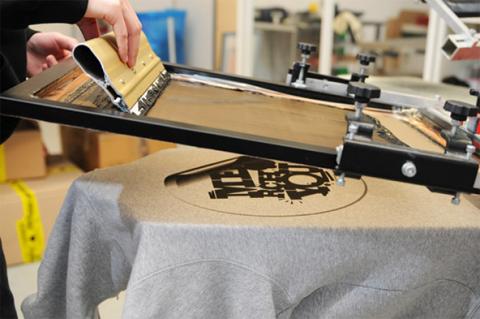What is Screen Printing?
Nov 03,2017
Most of us have drawers full of screen printed t-shirts. Screen printing is used to design shirts and convey a message, memory, confesses the love for something, ran in a charity event, show your favorite band - really anything you dream about can be screen-printed onto a shirt.
Many have us have dozens of screen-printed T-shirts on the drawer, however very few can explain what is screen printing and how it works. So have ever wondered the process that your T-shirts go through to get that amazing print that you like? If yes then today you are in the right place because, in this article, we are going to take you through that amazing journey to help you know more about screen printing.
What is Screen Printing?
Popularly referred to as silk screening, screen printing is actually a printing technique where images are applied to products such as the poster, t-shirts, wood, etc. among others. Anything that needs to be printed on can be screen printed if you have a big enough screen. It is a very simple process but it requires skill, experience and use of the right equipment to get the process right.
The process of screen printing involves taking mesh that is stretched over a frame and burning it to create the stencil. The area that has been stenciled will remain open mesh while on the area that is not stenciled is filled material that is non-porous. The mesh is then laid over the material to be printed on and filled with ink. Then you use a special tool called a squeegee to help push the ink via the open area of the mesh to the material to be printed thus creating the desired image.
This process is the same in all types of screen printing, the only difference only comes depending on the type of ink that has been used, the effect that it has rendered, and the surface printed on. When screen printing is done, one color is applied at a time. This means that the cost of screen printing will increase with every additional color. For instance, a design with 5 colors will need 5 screens.
How Does Screen Printing Work?
The screen printing process actually begins with the artwork. The quality and uniqueness of the final work will depend on the art. This is also the stage where you get to decide the number of colors of ink that you will use and where each color will go. As said earlier, more colors used means more cost and more time consumed because each color will require its own unique screen.
Once you are done with the artwork, the next process is to create the quality film positive of your artwork then use them to create a screen. The screen usually contains polyester mesh that is stretched into an aluminum frame. The mesh will have areas where the ink cannot penetrate and areas where the ink can penetrate.
Once you are done creating the screen, the next part of the printing process is to line up the printed material on the object you want to print on. The printed material must be lined up correctly before the ink is forced via the opening in the mesh to print the design to the material with an aid of an ink or else the design won’t be aligned correctly.
Once the printing is complete, place the printed material somewhere clean and let it dry.
Different Types of Screen Printing:
- Plastisol - This is one of the most popular types of screen printing. Plastisol is actually a suspension of the PVC particles that increase in size and flexibility. Plastisol is commonly used in the production of the garment because it usually gives quality image clarity. However, some people complain the Plastisol has a plastic appearance that they don’t like.
- Flocking- Flocking is a type of screen printing where glue is used to create an image. A foil is also used to help bring shiny appearance to the printed design.
- Discharge inks - Suitable bleaching agent is applied to water-based inks to remove the color from the garment so that the desired pigment settles on a neutral color. The discharge ink always works by altering the existing dyes in the garment to brighten them.
- Water-based ink - Unlike Plastisol screen printing, water-based usually give more penetration to the fabric. As a result, it is usually recommended for people who are looking for softer results.
In conclusion, from the above information, it is clear that screen printing is actually a simple process but requires skill, experience and use of the right equipment to get quality results. Although the screen printing process is the same, there are different types of screen printing that you can use to get the result that you are looking for.






